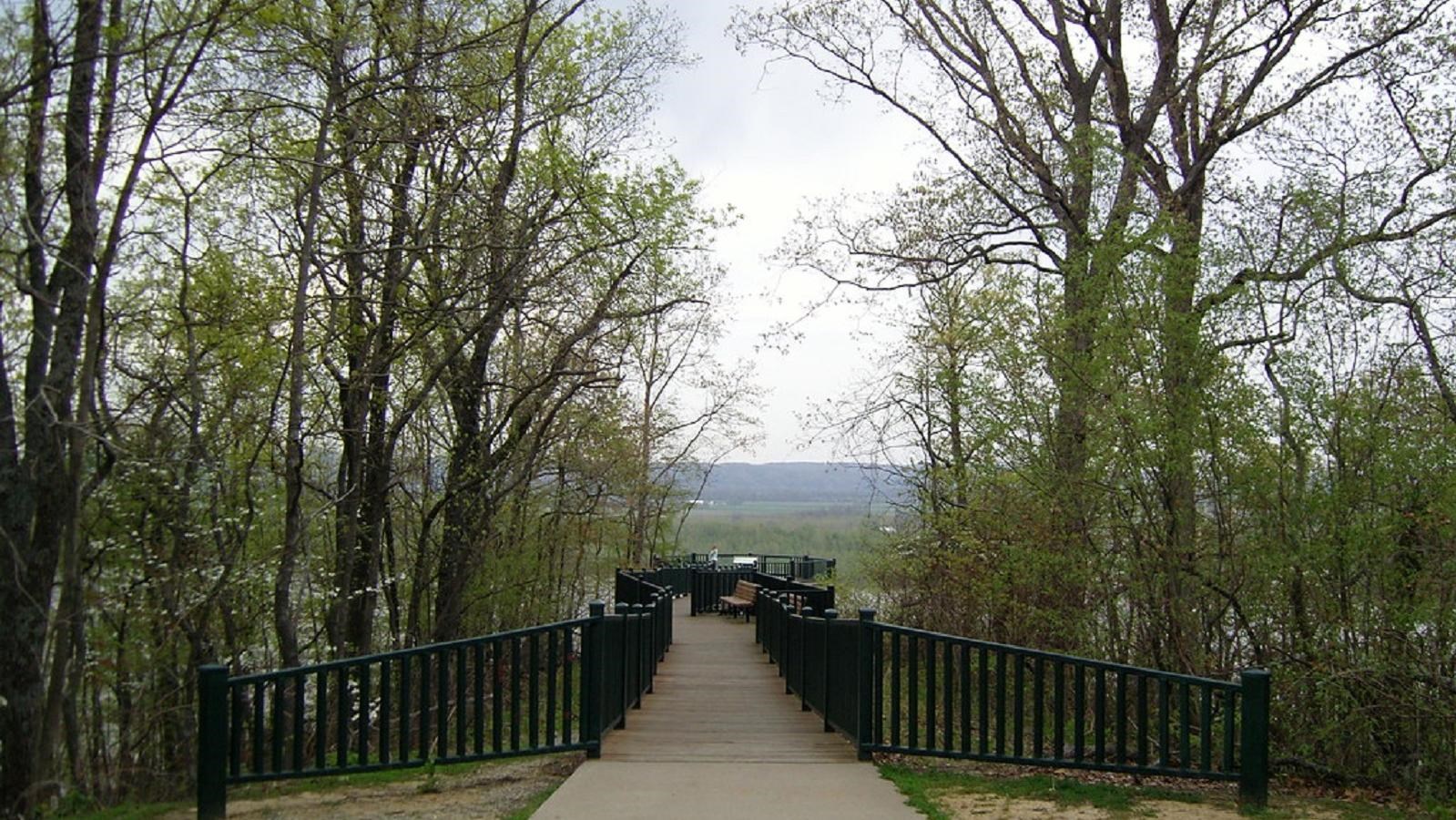Last updated: August 3, 2023
Place
Trail of Tears State Park

"Trail of Tears state park, MO" by kpc is licensed under CC BY-NC-ND 2.0
Accessible Rooms, Accessible Sites, Amphitheater, Beach/Water Access, Benches/Seating, Boat Ramp, Dock/Pier, Electrical Hookup - Boat/RV, Fire Pit, Historical/Interpretive Information/Exhibits, Information, Information - Maps Available, Information - Ranger/Staff Member Present, Parking - Auto, Parking - Boat Trailer, Parking - Bus/RV, Picnic Shelter/Pavilion, Picnic Table, Playground, Restroom, Restroom - Accessible, Scenic View/Photo Spot, Sewer Hookups - Boat/RV, Showers, Tactile Exhibit, Telephone, Toilet - Vault/Composting, Trailhead, Water - Hookup - Boat/RV
Lewis and Clark NHT Visitor Centers and Museums
This map shows a range of features associated with the Lewis and Clark National Historic Trail, which commemorates the 1803-1806 Lewis and Clark Expedition. The trail spans a large portion of the North American continent, from the Ohio River in Pittsburgh, Pennsylvania, to the mouth of the Columbia River in Oregon and Washington. The trail is comprised of the historic route of the Lewis and Clark Expedition, an auto tour route, high potential historic sites (shown in black), visitor centers (shown in orange), and pivotal places (shown in green). These features can be selected on the map to reveal additional information. Also shown is a base map displaying state boundaries, cities, rivers, and highways. The map conveys how a significant area of the North American continent was traversed by the Lewis and Clark Expedition and indicates the many places where visitors can learn about their journey and experience the landscape through which they traveled.
Established in 1957, the Trail of Tears State Park stands in memoriam to one of the most tragic events in American history. In 1830, the United States Congress passed the Indian Removal Act. This law required native tribes to vacate their ancestral lands and relocate to reservations in Oklahoma, then simply called Indian Territory. Then, in 1835, a small group of the Cherokee Nation signed the Treaty of New Echota, which divided the Cherokee People into two factions—those that supported the treaty and those that opposed it.
In May 1838, the U.S. Army, bolstered by various state militia groups, forcibly removed over 16,000 Cherokee from their homelands so that white settlers could move in. This journey, now referred to as the Trail of Tears, saw more than a thousand Cherokee, mainly the old, young, and infirm, perish on this brutal forced march. Thousands more died shortly thereafter from the exposure, disease, and starvation they had suffered while en route to the reservations.
The park’s visitor center offers exhibits focused on both the forced removal of the Cherokee People and the area’s natural history. A 23-minute documentary titled “Trail of Tears” is also available on demand. Interpretive programs are scheduled throughout the summer from Memorial Day through Labor Day.
Those looking to spend time outdoors will enjoy boating, fishing, hiking, and swimming. There are also two playgrounds within the park.Picnic sites are scattered throughout the park, some of which are accessible to those with disabilities. The park’s two covered pavilions are available for rent or, if not reserved, can be used on a first-come-first served basis for free. The campground offers basic, electric, and sewer/water/electric/water campsites, along with a special use camping area reservable for groups only.
To reserve a pavilion, call (573) 290-5268. Camping reservations may be made by calling (877) 422-6766. To reserve the special use camping area, call (573) 290-5268. For more specific information on the park, such as hours of operation, weather, and more, visit their website at Trail of Tears State Park.
